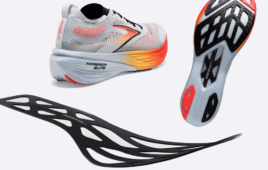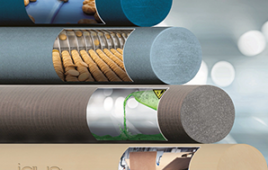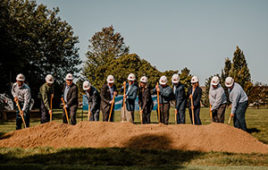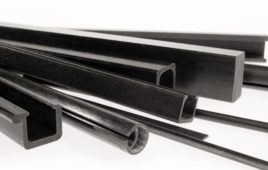Manufacturers have long used fiberglass when a strong, lightweight, formable material with some flexibility is required. For these reasons, it is a key building material among manufacturers of boats, trailers, automobiles, RVs, furniture, Jacuzzis and bathtubs, and water park slides.
Yet fiberglass emits hazardous volatile organic compounds (VOCs) during manufacturing due to its resins. Resins serve as a binding agent to fiberglass strands and typically contain styrene, a toxic air pollutant. As such, fiberglass is increasingly regulated by federal, state, and local agencies, particularly in California.
“We have manufactured composite fiberglass trailers with traditional polyester resins, vacuum infusion, even epoxies – but after California’s AQMD levied a $26,000 fine for VOC emissions we moved out of state,” says, Vince Austin, owner of NestEgg Trailers, a manufacturer of lightweight tow-behind trailers now based in Hayden, Idaho.
Because of the limitations of traditional fiberglass, manufacturers are being forced to look beyond the usual manufacturing techniques. That’s where a breakthrough in the manufacturing process of fiberglass has led many proactive manufacturers to find a new no VOC fiberglass alternative using a specially designed polyurea that increases production at a lower cost.
Such a resin substitute not only dries within 30 seconds, but also can be used with a chopper-mounted spray gun to make parts and even molds or rapid prototypes in minutes.
Because choppers cut the fiberglass strand to the desired length and throws it in front of the polyurea resin leaving the spray gun, they improve productivity. The polyurea resin attaches to the chopped fiberglass strand and lays into the mold of the fiberglass part being manufactured.
Status Quo Pitfalls
In the case of NestEgg Trailers, Vince Austin found that as a manufacturing technique, hand laying traditional polyester resins into a fiberglass matrix only worked when his company was very small. “As we got busier, we had to change because we were emitting too many VOCs with higher production.”
Next, NestEgg Trailers tried the vacuum infusion process of creating fiberglass with polyester resin. A sealed bag was placed around each part for the vacuum infusion process and to contain and remove the VOCs. “After we did a couple of trailers that way, we realized no one would be able to afford the labor involved as well as the large amount of bag and sealer waste,” says Austin.
NestEgg Trailers then tried epoxy as a fiberglass-binding agent to lower its VOCs. “The problem was that epoxy is very costly, all hand laid, and cannot be sprayed on a fiberglass chop machine, so it was cost and labor prohibitive,” says Austin.
A New Approach
Finally, after extensive research into the options available in this new category, Austin turned to a no VOC, fast set, rapid curing, structural polyurea product called AroStruct by VersaFlex. Such alternatives can take the place of traditional resins in a fiberglass matrix wherever fiberglass is used.
Unlike toxic polyester resins, which can take up to a day to fully cure, the spray-applied structural polyurea, applies with 100% solids, dries within 30 seconds, and cures within 60 minutes. This significantly increases manufacturers’ production rate and output while lowering their cost for fiberglass parts.
“Compared to traditional fiberglass part making methods, I’ve lowered my labor cost by 50% and mold making cost by 75% with AroStruct,” says Austin.
Spraying is achieved with a plural component spray gun connected to a long heated hose and pump machine. Unlike epoxy, which has a short pot life, the structural polyurea’s components are mixed in the spray gun nozzle during application so there is no pre-mixing needed and essentially no waste in the process.
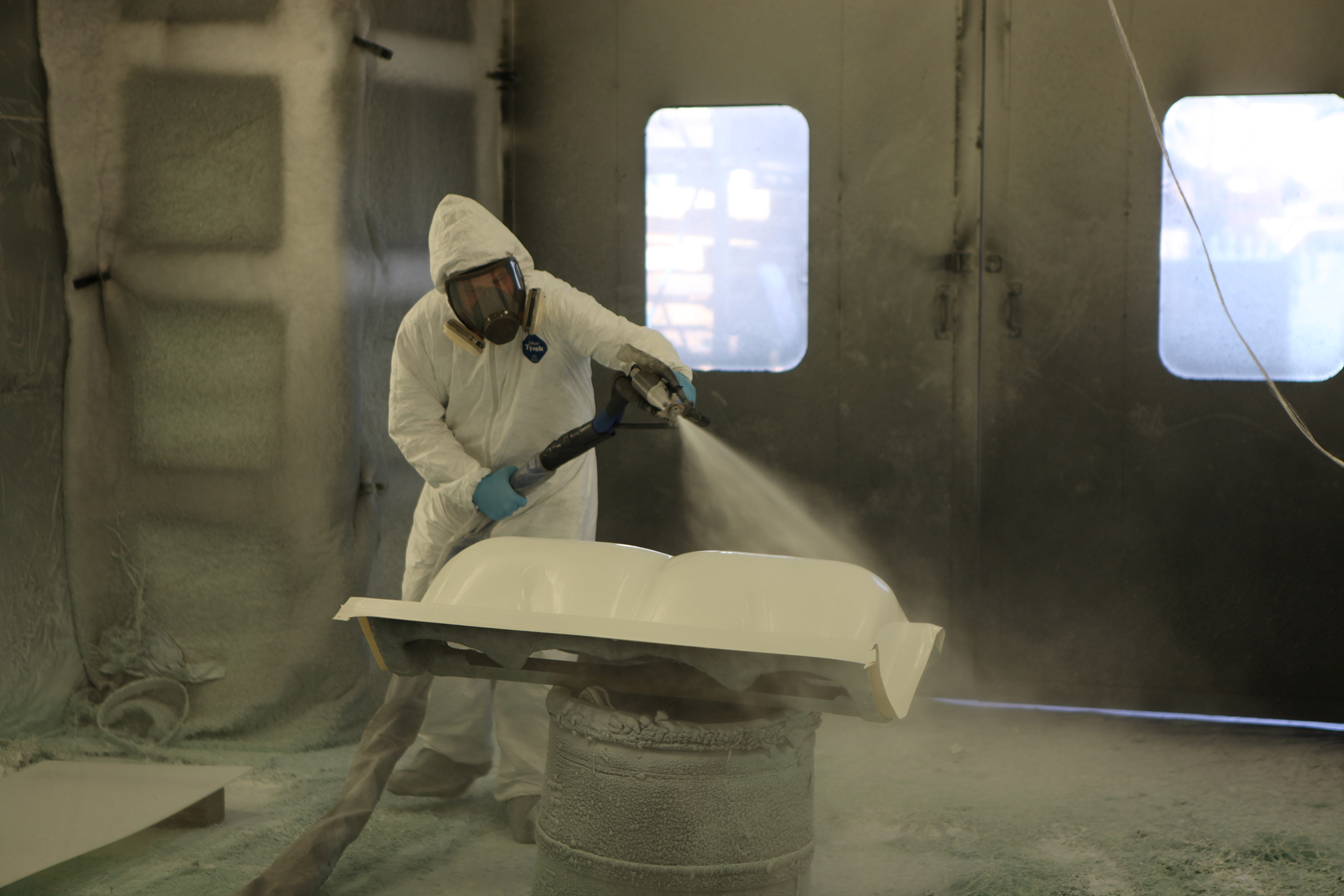
A breakthrough in the manufacturing process of fiberglass has led to a new no VOC, fast set, rapid curing, structural polyurea fiberglass alternative that increases production at a lower cost. Image credit: Versaflex
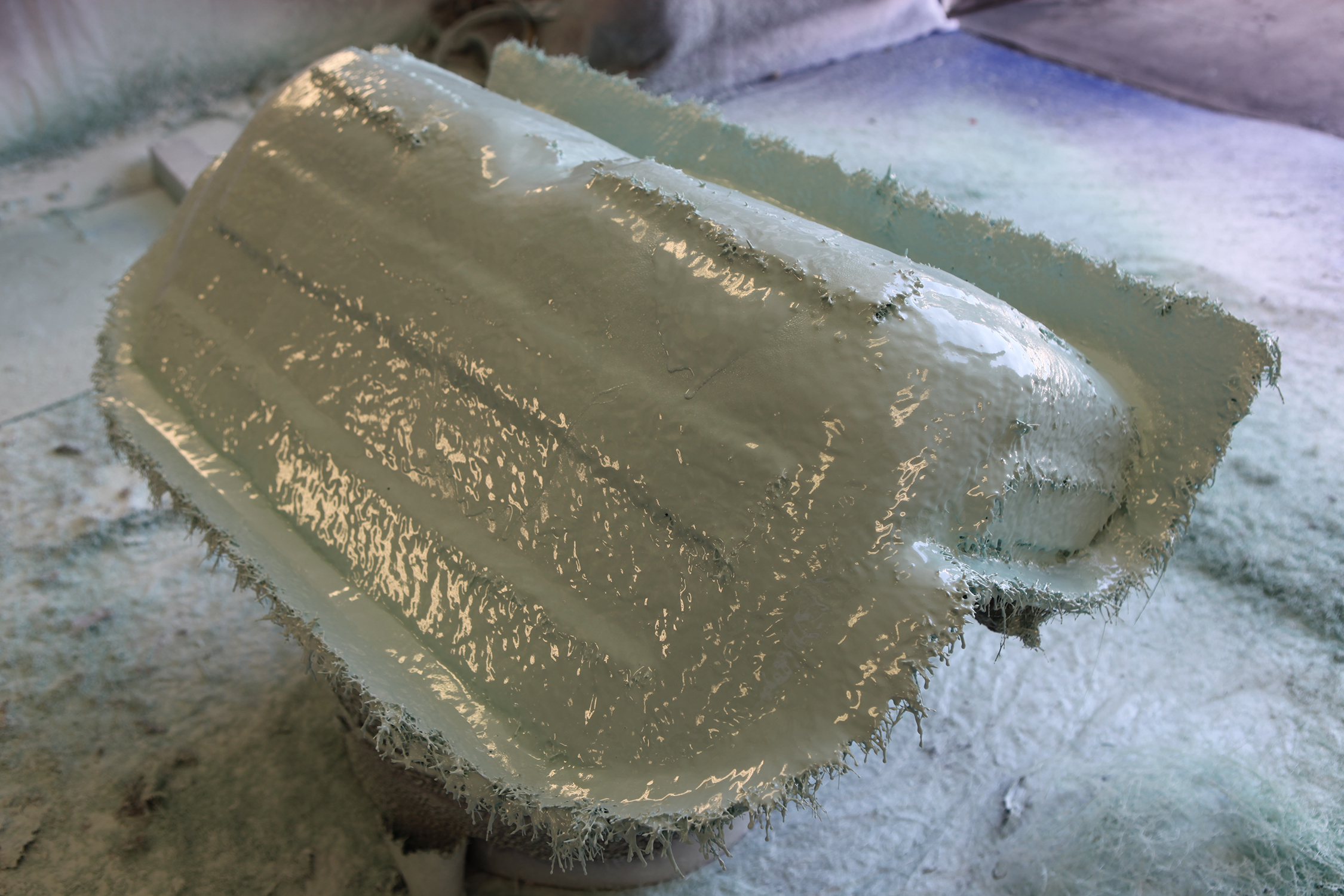
The polyurea resin attaches to the chopped fiberglass strand and lays into the mold of the fiberglass part being manufactured. Image credit: Versaflex
The polyurea product is also waterproof and exhibits superior physical properties such as hardness, high elongation, and tensile strength.
“We’ve found AroStruct to be at least as strong and flexible as traditional resins, but without the VOCs so we can spray indoors or out and meet regulations,” says Austin. “We were looking for the right combination of strength and elongation, and VersaFlex worked with us to optimize the formula for our process.”
The structural polyurea, in fact, enhances the structural integrity of substrates that it is sprayed on like a suit of armor, albeit one that can receive a decorative topcoat.
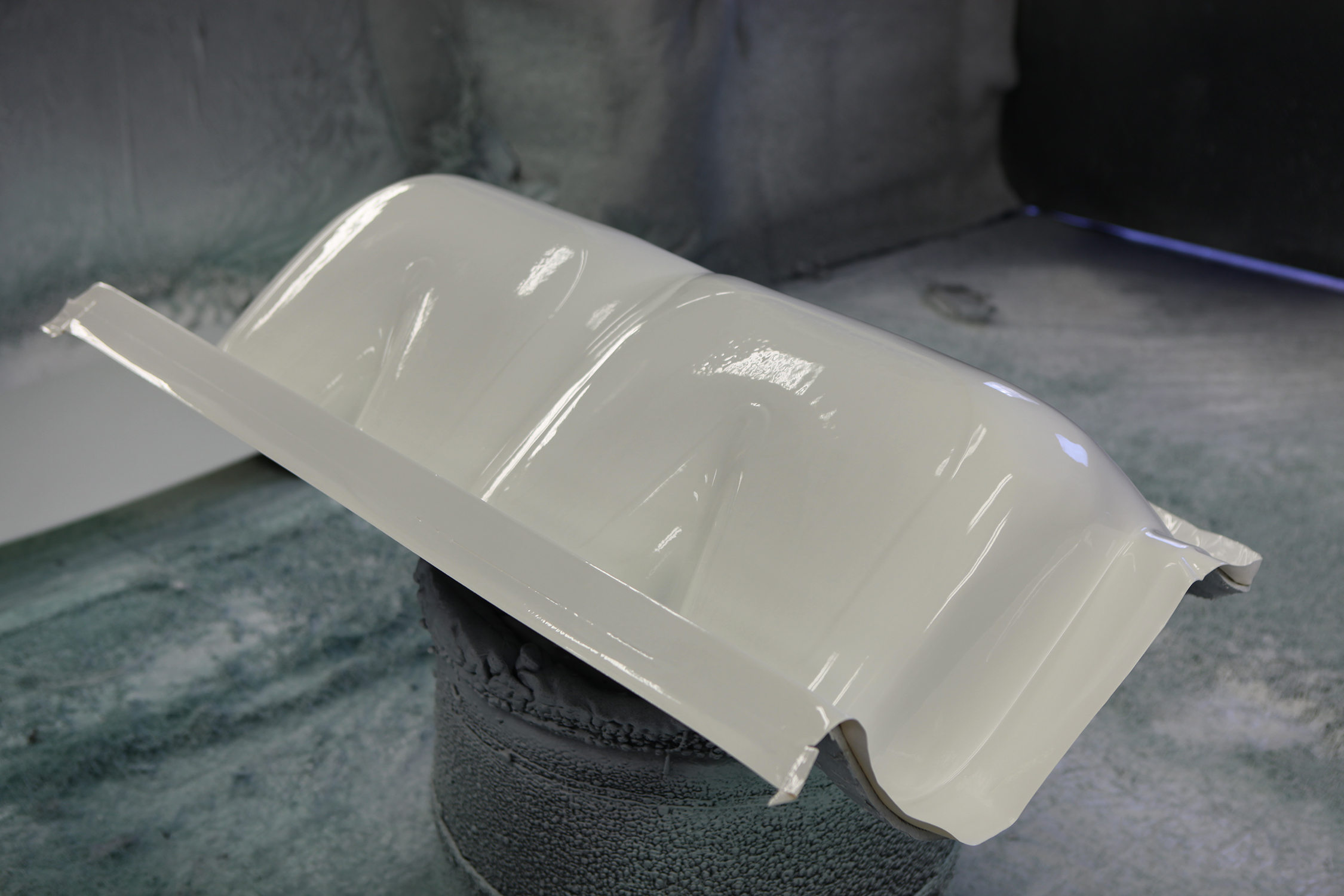
Unlike toxic polyester resins, which can take up to a day to fully cure, the spray applied structural polyurea applies with 100% solids, dries within 30 seconds, and cures within 60 minutes. Image credit: Versaflex
“When our off-road trailers need extra strength, we spray the structural polyurea on their underside so running over rocks won’t hurt them,” says Austin. “The structural polyurea has brute strength so a good hard hit doesn’t hurt it.”
To boost productivity, Austin mounted a fiberglass chopper on the spray gun. “Since the structural polyurea is so easy to apply with the spray gun mounted chopper and dries so quickly, we’re making product in about one-tenth the time we used to previously,” says Austin. “It lays down nice so there is no need to have guys rolling the product out to get the air bubbles out of it.”
NestEgg Trailers now uses the structural polyurea in about 75 percent of its fiberglass part making processes, with the goal of fully transitioning over from polyester resins as soon as possible.
“Our fiberglass part making efficiency has improved so much that I’ve moved half of my crew from making fiberglass parts into assembly,” says Austin. “That not only boosts production but also lowers our cost per part, making us more competitive.”
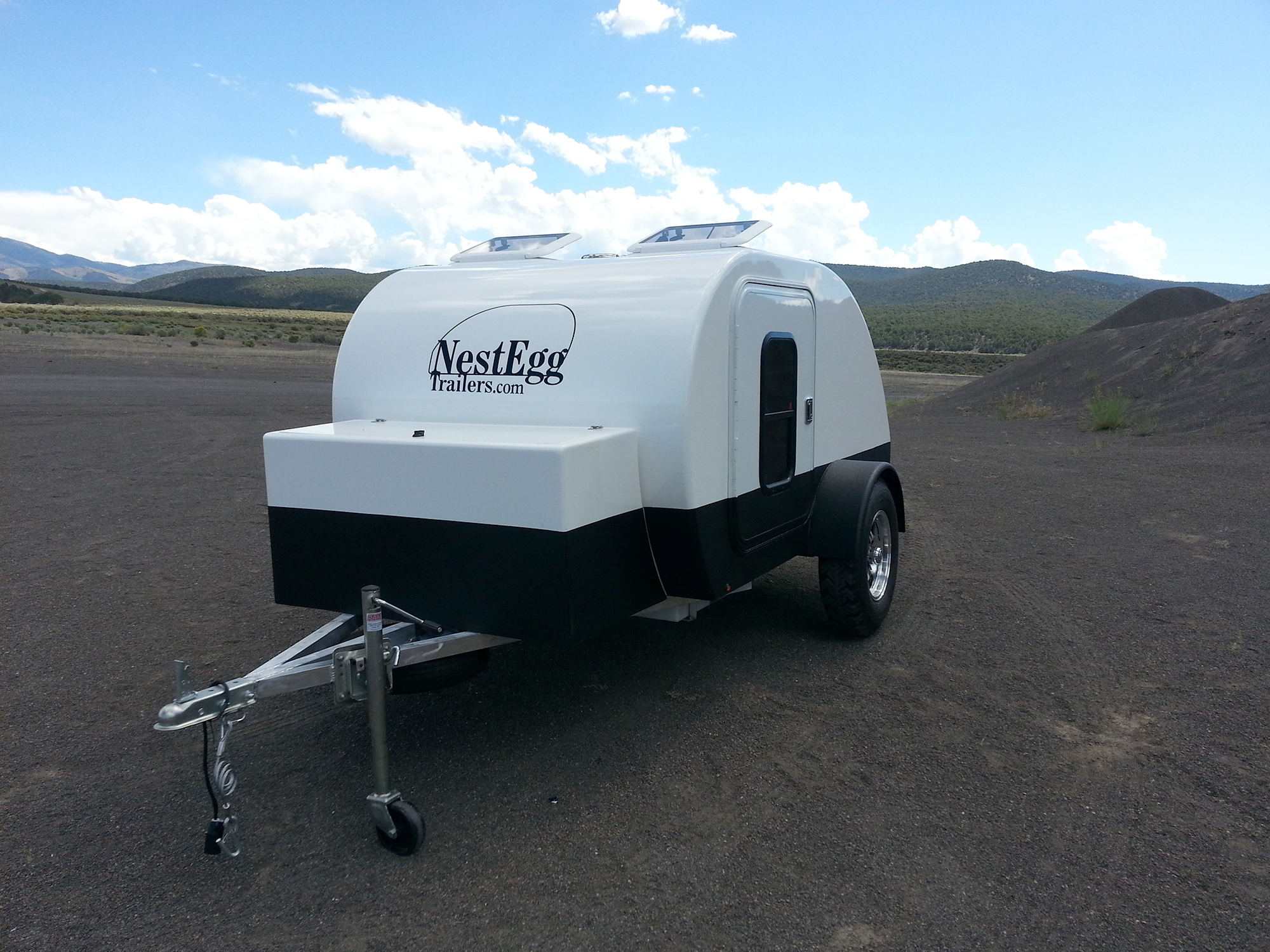
A NestEgg trailer. Image credit: Versaflex
According to Austin, however, one of the greatest benefits of switching to the structural polyurea is how it expedites the process of making molds for parts.
“The traditional mold making process, using polyester or epoxy resins, is very costly and labor intensive,” says Austin. “It can take weeks to hand lay the fiberglass. I paid $70,000 to a company that made my first mold out of polyester resin, hand laid fiberglass.”
Instead, NestEgg Trailers now uses the structural polyurea for the rapid prototyping of new designs or to cost effectively create production molds to increase production.
“When we first made a fender mold with AroStruct, we made the mold in minutes and it works flawlessly,” says Austin.
According to Austin, he used his vendor’s powder coated steel fender as the mold’s plug, or mold master part. “We simply waxed the part, put clay in any pockets or holes, then sprayed the fender with just the structural polyurea. “When that dried within 30 seconds, we peeled the piece off the painted fender surface and had our mold.”
“While more complex molds still require a cage around the part, we can make a mold in about 1-2 days that would typically take 1-2 months using traditional resin,” concludes Austin. “Since this cuts the cost of making molds from tens of thousands of dollars to just a few thousand, we can create new designs or make design modifications as needed. We no longer have to wait years to recoup the sky high cost of traditional mold making.”
Filed Under: Materials • advanced

